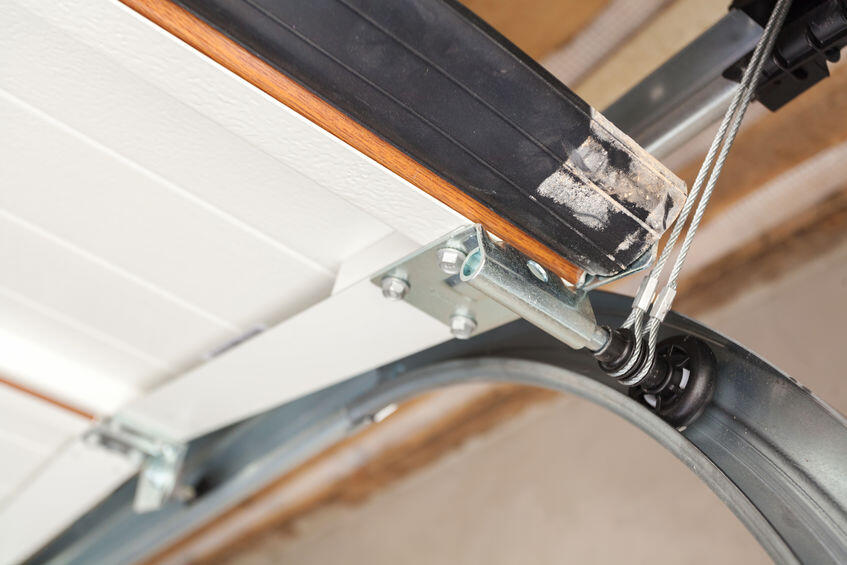The garage door is a ubiquitous part of your home. In fact, according to a 2015 study, 63% of all housing units in the United States have a garage or carport. Yet, the garage door is the one part of a home most people take for granted. As long as it opens and closes, that’s enough for most homeowners. But the entirety of its functionality is more than just one movement. The garage door system itself is a complex arrangement of mechanisms that all work together to ensure what seems like a very basic function: the opening and closing your garage door.
Today, we want to introduce you to the various components and mechanisms that make up your garage door system. It isn’t as simple as opening and closing your front door. So, how does it all work?
Well, it is important to consider that garage door systems are composed of a handful of interconnected parts that each performs a specific function. Put together, these parts maintain the proper functioning of your garage door. Once you understand each of these different parts and their functionality, it is easy to grasp how the door moves up and down, and what you need to do to maintain it. Let’s start with the most obvious part of your system, aside from the garage door itself.
Garage Door Opener
The most complex part of your garage door system is the garage door opener. The most common form of an opener is a box or small rectangular or ovular shape hanging from your ceiling. Your opener receives the signal from your remote or from a switch on the wall to either raise or lower your garage door. Insight your opener is a motor, which produces the energy required to operate the mechanisms that raise and lower your door. There are quite a few openers on the market, so make sure to research the different garage door opener types available to you.
Safety Sensor
A modern garage door system has something older mechanisms do not: a safety sensor. Modern garage door technologies include a photo eye that consists of two sensors on each side of the garage door near the bottom of the opening. A beam of infrared light is transmitted between the sensors and when the beam is broken, the door will stop. Garage doors are very large and heavy, so these safety sensors prevent accidents if a child or pet passes below the door when it is closing.
Emergency Cord
While we are talking about garage door opener safety, the emergency cord plays a critical role. Hanging from the door opener itself, usually with a red tag attached to it, the emergency cord disengages the opener’s motor from functioning when it is pulled. Even if you never need to use it in an emergency, the feature is useful if you need to perform maintenance on the door and you need to prevent any chance of it opening or closing.
Torsion Springs
Although the motor in the garage door opener may seem like it quite literally does all the heavy lifting, it can’t do it without some help. The motor merely controls the course of movement the garage door will take during its operation. It is the torsion springs that contain the pent up elastic energy that produces the power needed to lift the door. Consider how heavy the garage door is. With the opener disengaged, you would normally never be able to lift it manually using your own strength. But with the help of your garage door springs, you can. If you need torsion spring repair, make sure to leave it to the professionals. Springs are too dangerous for DIY projects.
Tube Shaft & Drums
Your tube shaft is the bar that runs above the door and holds the torsion springs in place. While the tube shaft does not move, it is required to ensure your springs function effectively. Conversely, your drums are a part of the garage door system that attaches to the ends of the tube shaft. They act as pulley wheels so that when the elastic energy from the springs are released, the drums rotate and cause your cables to move. Speaking of cables…
Cables
Metal cables on each side of your garage door provide the required connecting point between the opener and the door. One end of the cable connects to the bottom of your garage door and the other end to the top of the drum. As the drum rotates, it rolls up the cable and as the cables are rolled up, they lift the door.
Tracks & Rollers
All of the previously mentioned mechanisms specifically control the actual movement of the garage door. Together, they provide the force that moves it. But while your tracks and rollers do not provide specific energy, they provide the path your garage door travels on as it moves throughout its normal operation. The rollers are small wheels installed on the sides of your garage door and they fit into the metal tracks. These tracks trace the path your garage door will take as it opens and closes. Modern designs prohibit the movement of a your garage door if it has jumped its tracks.
Brackets & Hinges
Brackets and hinges are a part of your garage door itself. And although they may seem like the most boring of your garage door components, they play an important part in the proper functioning of your garage door system. Your brackets keep the cables and rollers fastened to the sides of your garage door and the hinges exist in the middle of the garage door itself. Without these components, there would be no garage door. It would just be one solid object inacabable of transitioning from vertical to horizontal position and back.
There you have it! We hope you have found our deep dive into the specific components that comprise a properly functioning garage door system. If you find yourself having problems with your garage door or associated mechanisms or are looking for garage door repair in Akron, Ohio or the surrounding areas, don’t hesitate to contact your friends at Prestige Door. We are here to help!

